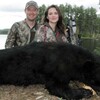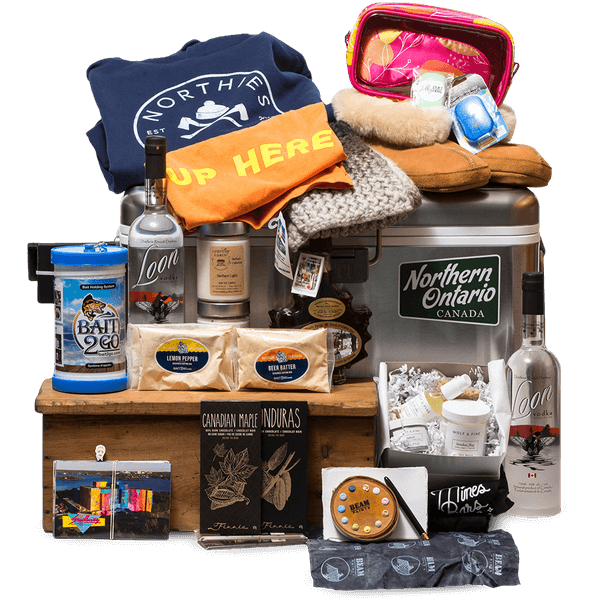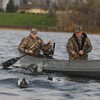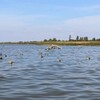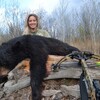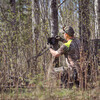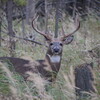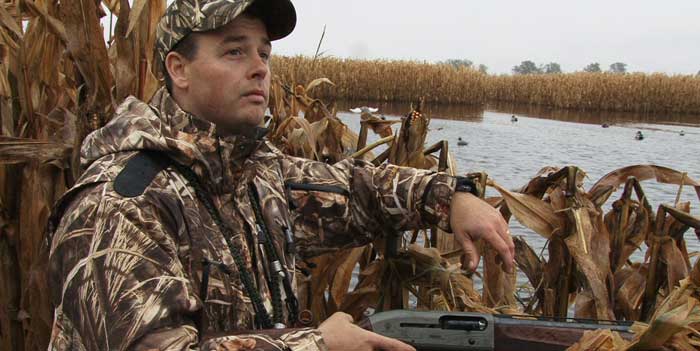Prime Goose Habitat and Hunting in Southern Ontario
The honking of geese in the distance is a welcome sound. At 400 yards out we can see a dozen Canadas coming straight toward us. They are flying low in the early morning and seem intent on feeding in a nearby field. A few calls from our guide and the lead bird notices our decoys and switches direction. Gliding in with cupped wings the geese suddenly flare at 30 yards as we flip up the top of our layout blinds. Four shots and three geese are down.
The black lab charges out to retrieve the first of the geese. We quickly reload our shotguns since more honking in the distance signals another flight is on the way. This is Central Ontario goose hunting at its best.
Prime Goose Habitat
The area which offers potential for geese extends from Newcastle on Lake Ontario, north to include all of the Kawartha Lakes east to Tweed, and south to Belleville. Lake Ontario, the Kawartha Lakes, and numerous small ponds provide overnight resting spots. Most of this region is rural farming with wheat, barley, oats, peas, and corn - all favourites of Canadas.
The south central area of Ontario has very little hunting pressure but there is a high goose population and virtually thousands of farms to hunt. Early in the year, local geese are found on the Kawartha Lakes and adjacent farms. As freeze-up occurs in November the geese move south to Lake Ontario. Daily flights of 6 to 20 km to feeding fields are common. Savvy hunters drive the side roads morning and late afternoon scouting to find where geese are landing. Often 500 to 1,000 Canadas can be seen in a 10-acre field. Asking a farmer for permission the day before a hunt is part of the routine.
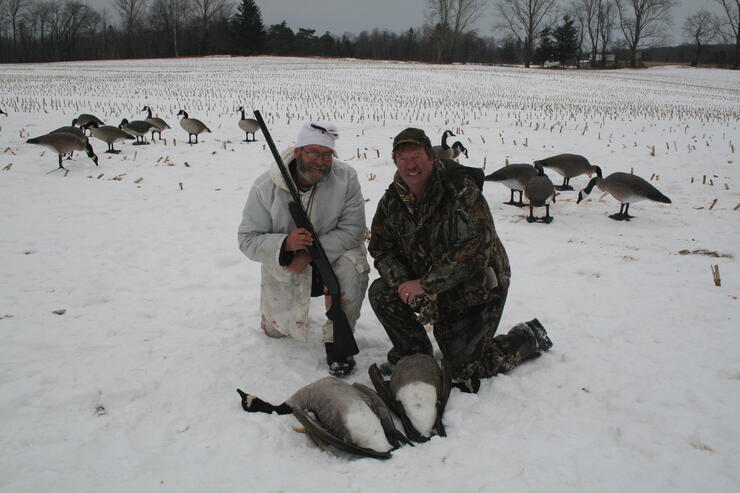
Bringing in the Geese
Looking at our decoy spread I am impressed at how easy it was to put out. A dozen shells and two standing decoys prove to be more than adequate. The decoys are set in a horseshoe pattern with the bottom of the shoe creating a landing area directly in front of us. The wind is at our back as the birds will land into the wind.
Since Canadas are notorious for changing fields it's important to scout every day. The other alternative is to hunt with a guide who has permission to access a number of different farms. The guide will supply blinds and teach you how to call and set decoys. It is money well spent and virtually guarantees a successful hunt. A variety of accommodations are available with the best choices being Port Hope, Cobourg, or Peterborough.
Guide SERVICES
Brian Sheppherd
Port Hope
PH: (905) 396-8683
Randy Sayles
Havelock
PH: (705) 653-8834
Recommended Articles
Turkey Tips and Tricks
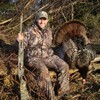
Chasing Gobblers
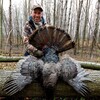
Turkey Lessons
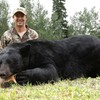
Crossing the Border into Canada
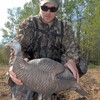
Ontario Turkey
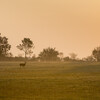
Spot and Stalk
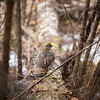
Grouse Hunting Outfitters In Ontario’s North
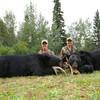
A Bear Hunt That Keeps You Coming Back

Bird Dog Friendly Lodges
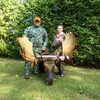
Ontario's Largest Moose by a Female
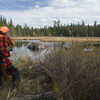
A Northern Ontario Moose Hunt
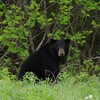
Marten River Bear
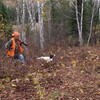
Black Bear Camp
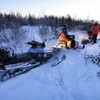
Tracking Winter Moose
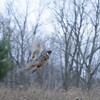
Flushing in Norfolk
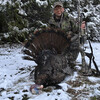
Hunting Turkey
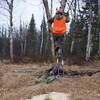
11th-hour deer
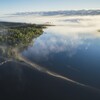
Fly-in Moose Hunting
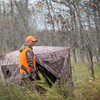
Ground Blind for Deer
